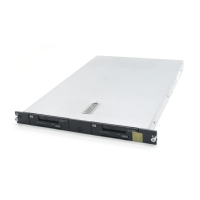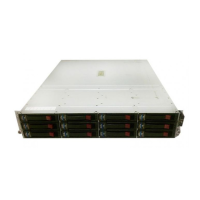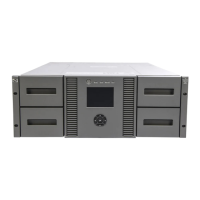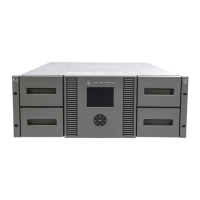Shows information about the volumes in the local storage system. One row represents one volume. By
default, information in the list is arranged in order of port numbers. For volumes with more than one path,
each path appears in a separate row. The maximum number of rows in the list is 2,048. If the number
of volumes exceeds the number of rows, click Previous or Next to view information about volumes that
do not appear in the list. You can also use the vertical and horizontal scroll bars to view more information.
• VOL: Identifies the volumes in the local storage system. See the figures at the end of this table for an
illustration with identifying callouts.
A device ID ending in # (e.g., 00:00:3C #), indicates the LDEV is an external volume. For details on
an external volume, see HP StorageWorks P9000 External Storage for Open and Mainframe Systems
User Guide.
A device ID ending in X (e.g., 00:00:3C X) indicates the LDEV is a Thin Provisioning virtual volume.
For details on a virtual volume, see HP StorageWorks P9000 Provisioning for Open Systems User
Guide.
To the right of the icon appears information about an LU path (illustration at the end of this table),
which is a path from hosts to the volume.
The icons are:
This volume is not paired with any other volume. This volume is neither a P-VOL nor a S-VOL.
This is a P-VOL.
This is a S-VOL.
• Status: Indicates the status of pairs.
SMPL: The volume is not currently assigned to a pair. When the initial copy is started by a paircreate
operation, the volume status changes to COPY.
COPY: The initial copy operation is in progress. Data in the P-VOL is not synchronized with data
in the S-VOL. When the initial copy is complete, the status changes to PAIR.
PAIR: The volume is paired with another volume. The two volumes are fully synchronized. All updates
from the host to the P-VOL are duplicated at the S-VOL.
PSUS: The pair has been split by the user (pairsplit-r), or the pair has been released by the user from
the secondary system (pairsplit-S). The P-VOL and the S-VOL are not synchronized.
PSUE: The pair has been split by the primary storage system or the secondary storage system due
to an error or a failure. The P-VOL and the S-VOL are not synchronized.
Pair Operation
Pair Operation window 161
